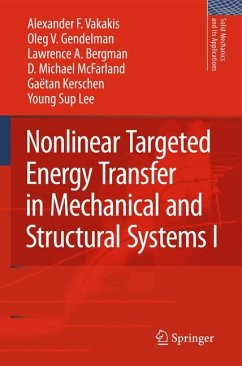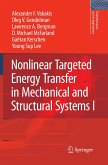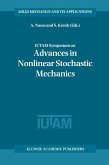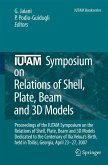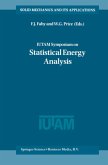This monograph is the first in the new area of targeted nonlinear energy transfer in mechanical and structural systems. This concept was initially discovered by the two leading authors in 1999, and was further developed exclusively by the entire author group in the last 6 years. Since then, additional groups of researchers in the USA, Russia, UK and France have started working on this concept and applying it.
It is estimated that in the years to come, the concept of targeted nonlinear energy transfer will be considered and applied by numerous groups of researchers and practitioners internationally. This monograph presents theoretical methods, computational results and experimental demonstrations of this concept applied to discrete and continuous coupled nonlinear oscillators. Moreover, it demonstrates the wide applicability of targeted nonlinear energy transfer to a wide range of problems, including: (1) Vibration and shock isolation in mechanical systems; (2) Seismic mitigation; (3) Aeroelastic and structural instability suppression; (4) Drilling operations; (5) Packaging devices.
This is a groundbreaking and unique volume, providing new design paradigms in a variety of fields.
This monograph evolved over a period of nine years from a series of papers and presentations addressing the subject of passive vibration control of mechanical s- tems subjected to broadband, transient inputs. The unifying theme is Targeted - ergy Transfer - TET, which represents a new and unique approach to the passive control problem, in which a strongly nonlinear, fully passive, local attachment, the Nonlinear Energy Sink - NES, is employed to drastically alter the dynamics of the primary system to which it is attached. The intrinsic capacity of the properly - signed NES to promote rapid localization of externally applied (narrowband) - bration or (broadband) shock energy to itself, where it can be captured and dis- pated, provides a powerful strategy for vibration control and the opens the pos- bility for a wide range of applications of TET, such as, vibration and shock i- lation, passive energy harvesting, aeroelastic instability (?utter) suppression, se- mic mitigation, vortex shedding control, enhanced reliability designs (for ex- ple in power grids) and others. The monograph is intended to provide a thorough explanation of the analytical, computational and experimental methods needed to formulate and study TET in mechanical and structural systems. Several prac- cal engineering applications are examined in detail, and experimental veri?cation and validation of the theoretical predictions are provided as well. The authors also suggest a number of possible future applications where application of TET seems promising. The authors are indebted to a number of sponsoring agencies.
It is estimated that in the years to come, the concept of targeted nonlinear energy transfer will be considered and applied by numerous groups of researchers and practitioners internationally. This monograph presents theoretical methods, computational results and experimental demonstrations of this concept applied to discrete and continuous coupled nonlinear oscillators. Moreover, it demonstrates the wide applicability of targeted nonlinear energy transfer to a wide range of problems, including: (1) Vibration and shock isolation in mechanical systems; (2) Seismic mitigation; (3) Aeroelastic and structural instability suppression; (4) Drilling operations; (5) Packaging devices.
This is a groundbreaking and unique volume, providing new design paradigms in a variety of fields.
This monograph evolved over a period of nine years from a series of papers and presentations addressing the subject of passive vibration control of mechanical s- tems subjected to broadband, transient inputs. The unifying theme is Targeted - ergy Transfer - TET, which represents a new and unique approach to the passive control problem, in which a strongly nonlinear, fully passive, local attachment, the Nonlinear Energy Sink - NES, is employed to drastically alter the dynamics of the primary system to which it is attached. The intrinsic capacity of the properly - signed NES to promote rapid localization of externally applied (narrowband) - bration or (broadband) shock energy to itself, where it can be captured and dis- pated, provides a powerful strategy for vibration control and the opens the pos- bility for a wide range of applications of TET, such as, vibration and shock i- lation, passive energy harvesting, aeroelastic instability (?utter) suppression, se- mic mitigation, vortex shedding control, enhanced reliability designs (for ex- ple in power grids) and others. The monograph is intended to provide a thorough explanation of the analytical, computational and experimental methods needed to formulate and study TET in mechanical and structural systems. Several prac- cal engineering applications are examined in detail, and experimental veri?cation and validation of the theoretical predictions are provided as well. The authors also suggest a number of possible future applications where application of TET seems promising. The authors are indebted to a number of sponsoring agencies.
From the reviews:
"Two volumes of this monograph present an original approach to the problems of passive vibration control of dissipative mechanical and structural systems subjected to broadband transient inputs, including topics of targeted energy transfer (TET) and nonlinear energy sink (NES). ... This monograph is intended for scientists and mechanical and civil engineers who have a general knowledge of analytical dynamics and ordinary and partial differential equations, as well as integro-differential equations." (Jerzy Gawinecki, Zentralblatt MATH, Vol. 1170, 2009)
"This two-volume monograph addresses the problem of passive vibration control of mechanical systems in which a strongly nonlinear, passive, local attachment is used as a damper. The aim is to provide an in-depth explanation of the analytical, computational, and experimental techniques required to study targeted energy transfer. The applicability of the techniques to a wide range of areas is demonstrated. The intended audience is researchers and engineers interested in one-way energy transfer." (IEEE Control Systems Magazine, Vol. 30, April, 2010)
"Two volumes of this monograph present an original approach to the problems of passive vibration control of dissipative mechanical and structural systems subjected to broadband transient inputs, including topics of targeted energy transfer (TET) and nonlinear energy sink (NES). ... This monograph is intended for scientists and mechanical and civil engineers who have a general knowledge of analytical dynamics and ordinary and partial differential equations, as well as integro-differential equations." (Jerzy Gawinecki, Zentralblatt MATH, Vol. 1170, 2009)
"This two-volume monograph addresses the problem of passive vibration control of mechanical systems in which a strongly nonlinear, passive, local attachment is used as a damper. The aim is to provide an in-depth explanation of the analytical, computational, and experimental techniques required to study targeted energy transfer. The applicability of the techniques to a wide range of areas is demonstrated. The intended audience is researchers and engineers interested in one-way energy transfer." (IEEE Control Systems Magazine, Vol. 30, April, 2010)

